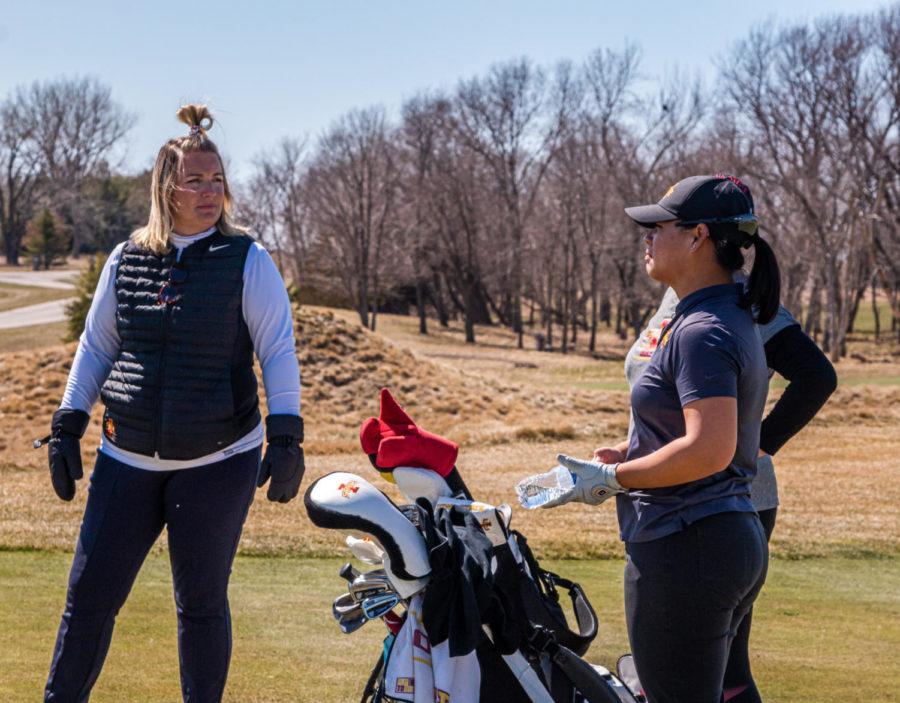Outdoor Rec may be Ames’ best-kept secret
January 21, 2000
When celebrated American naturalist John Muir first ventured into the wildlands of California’s Yosemite Valley, nature was commonly considered a malevolent force; something to be conquered, not something to commune with.
Small wonder he had a hard time finding human hiking companions.
“Only by going alone in silence, without baggage, can one truly get into the heart of wilderness,” Muir wrote.
For the staff at Iowa State’s Outdoor Recreation Center, the “heart of wilderness” is a venue for group-driven, adrenaline-laced fun as well. And they want to get the word out.
“People just don’t know about it,” Amy Samson, senior in anthropology said. “That’s the problem.”
The center’s subterranean offices encompass the lower level of State Gym and house an extensive collection of backcountry gear, a resource library and a drive-up station filled with rows of canoes, kayaks and sailboats — all available for rental.
“Canoes are our biggest ticket item,” Audra McBride, the center’s director said. “From Memorial Day to Labor Day they’re in high demand.”
The center’s cache includes cross-country skis, snowshoes, stoves, internal and external-frame backpacks, down and synthetic-fill sleeping bags and classic-style three-season tents.
The resource library is stocked with books and outdoor-oriented magazines. Road and topographical maps are on file, and staff members are eager to help visitors with any questions they might have.
Workshops cover a wide range of outdoor skills including climbing, kayaking and cross-country skiing.
More conventional sports items are also available such as footballs, volleyball sets, even black and white-striped referee jerseys for impromptu weekend tournaments.
Augmenting the center’s tradition of helping make outdoor adventure activities more accessible, McBride also arranges student-led trips across the United States.
In 1999, the center sponsored trips to the Teton mountain range in Wyoming, Voyageurs National Park along the vast boundary waters of Minnesota, the Ouachita National Forest in the Arkansas Ozarks, and Florida’s mangrove-lined Everglades National Park.
“Nobody here is scared of going out there and checking things out,” McBride said.
This spring, the center plans to lead backpacking groups in Gila National Forest in New Mexico, Nebraska and Michigan, canoeing in Minnesota, caving in Southern Illinois, and cross-country skiing and winter camping in South Dakota.
“This spring semester we’ll have a lot of new places we’re going to,” McBride said. “We’re trying to shake things up a bit.”
One of the highlights of participating in the trips, whether they be multi-day excursions or weekend-long jaunts, is the cuisine prepared and enjoyed in the wild.
“The best part of [a trip] is the meals,” Sylvia Wlodarski, senior in animal ecology, said. “There’s so much, and everything tastes better outdoors.”
“You think you’d lose weight backpacking for a week,” Samson added. “I gain weight.”
Adding to the experience is the presence of international students and the savory dishes unique to their cultures.
“Dealing with other cultures is interesting,” McBride said. “Especially when it includes things like cooking.”
The center welcomes all interested students, faculty and staff, but gives special emphasis to beginners hoping to become acquainted with various outdoor activities, McBride said.
Seeing people stretch their previously set limits of endurance and vanquishing long-held fears is particularly gratifying to trip leaders and organizers.
“Probably what sticks out the most is those people who try their first climb and they’re just horribly, horribly terrified,” McBride said. “To finish it and see the thrill on their faces is worth every single second you spend out there.”
After a trip, student leaders meet with McBride to discuss the challenges they encountered and gather information gleaned from the experience and participants.
“When people get back they fill out evaluations,” Chris Buttikofer, junior in psychology and business said. “[They tell us] what they liked and disliked and we use that to make modifications.”
Staff members interested in becoming trip leaders first serve as “apprentices,” then receive further training leading to trips of their own.
“A lot of people who work here want to be [professional] guides later on,” Wlodarski said. “The experience definitely helps.”
Some of the far-flung places current leaders have traveled to include Patagonia in Chile, the Tatras in Poland, and national parks in Wyoming, Minnesota and Arizona.
The stresses of managing the center make taking part in many trips difficult for McBride, but she still shares in pre- and post-departure excitement.
“I get to hear about all of these wonderful trips, but it’s kind of hard to do them,” McBride said. “It’s too exhausting, but our staff is amazing.”
For trip leaders, the sober reality of being responsible for the safety of participants takes precedence, but the rewards for meticulous planning and preparation are enjoyed in the field.
“When I’m on top of a mountain, that’s when I think most clearly,” Samson said. “I love being outside. Getting paid for it is just an added bonus.”






